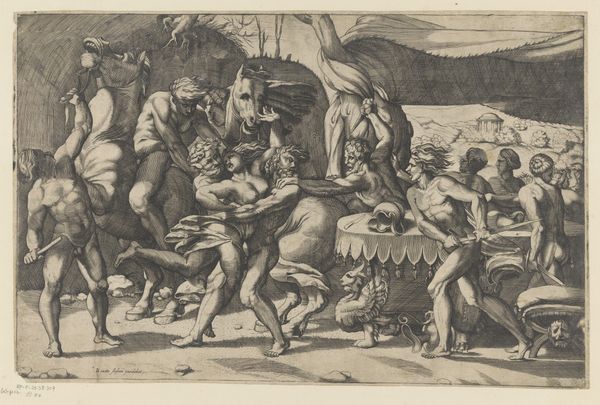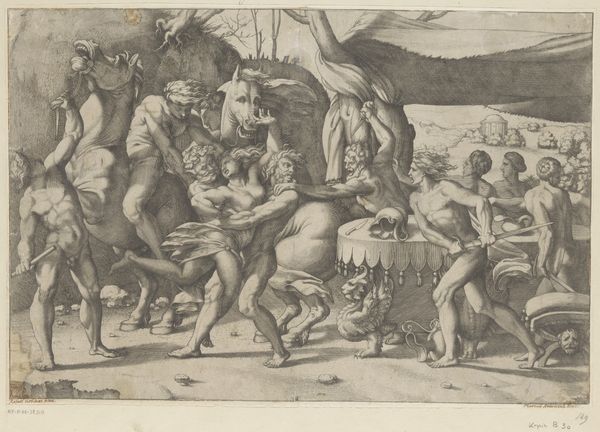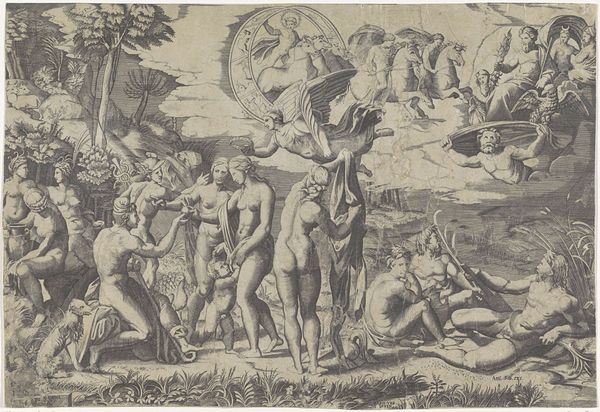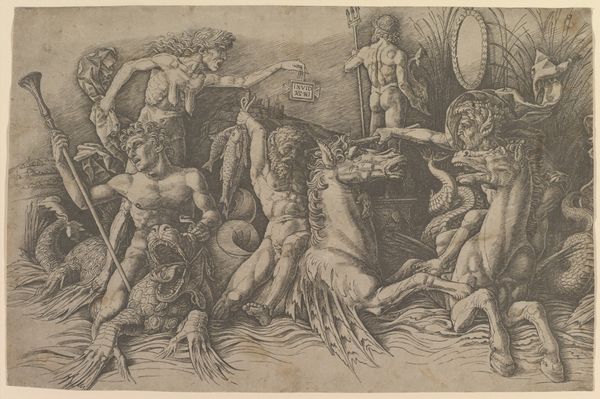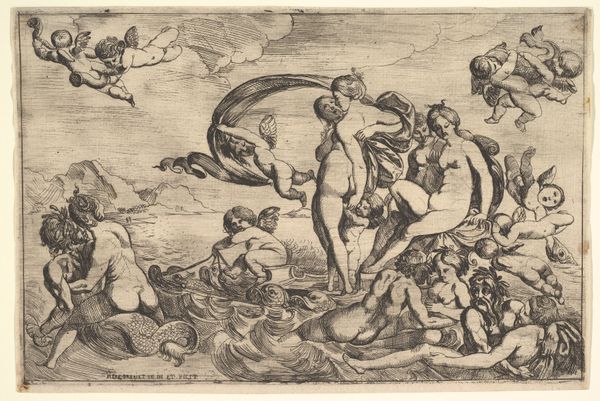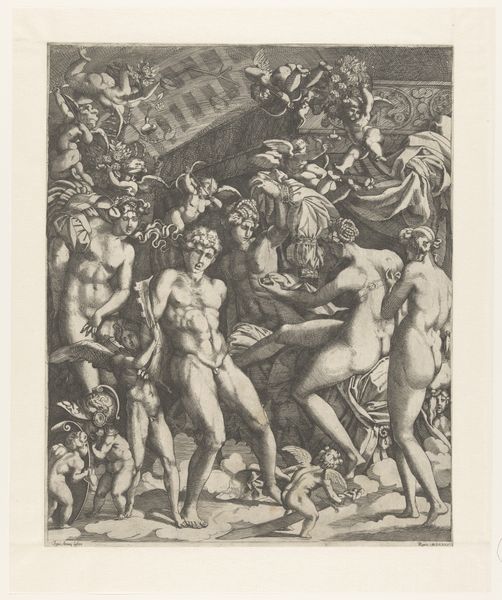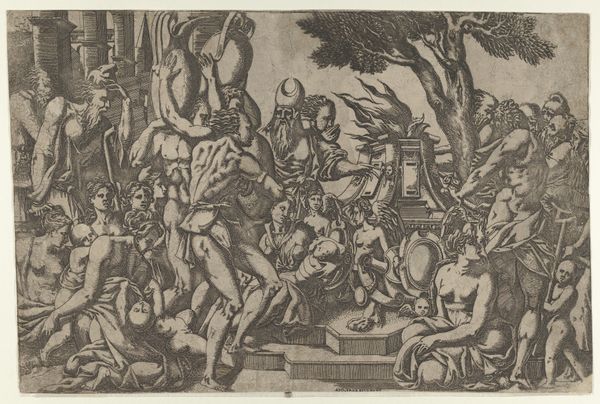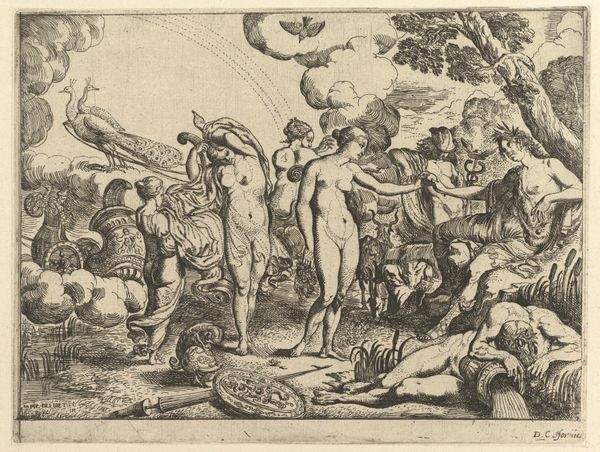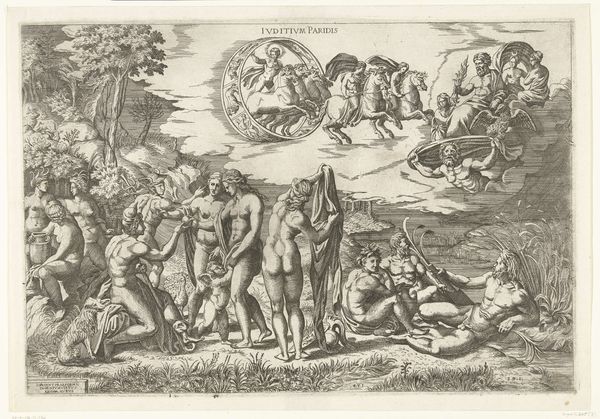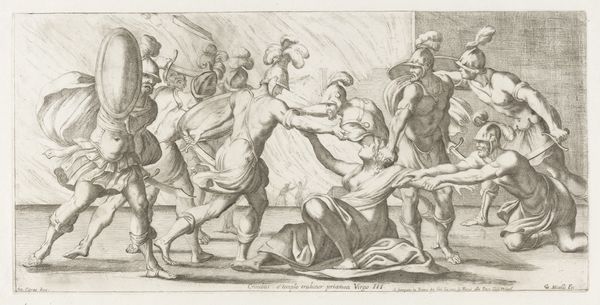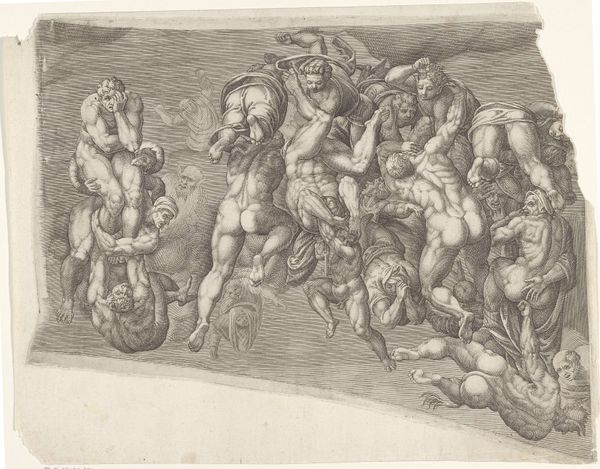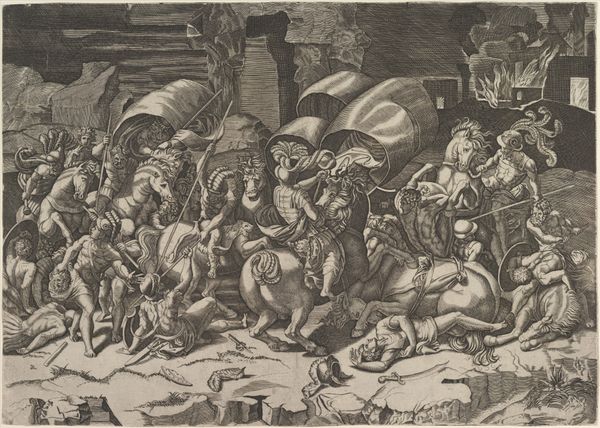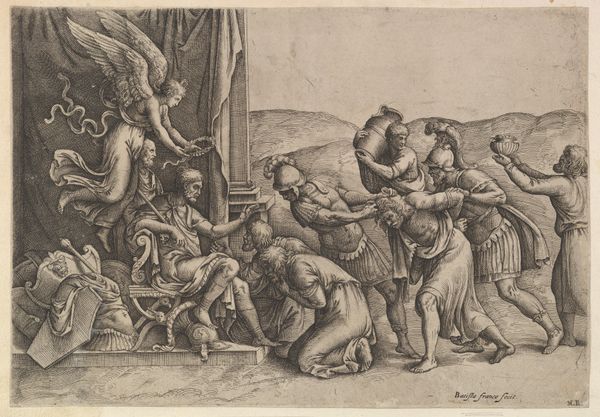
print, engraving
# print
#
caricature
#
mannerism
#
figuration
#
line
#
history-painting
#
nude
#
engraving
Dimensions: height 81 mm, width 129 mm
Copyright: Rijks Museum: Open Domain
Curator: Right, let's delve into this engraving entitled "Roof van een vrouw door man en sater," which translates to "Rape of a Woman by Man and Satyr." It comes to us from the workshop of Étienne Delaune, dating sometime between 1542 and 1583. It's part of the Rijksmuseum's collection. Editor: Woah. Chaotic energy. Like a fever dream transcribed onto metal. All these figures crammed together, limbs akimbo, barely contained within the frame. It makes me feel a bit breathless, almost suffocated by the density. Curator: Precisely. Delaune, deeply entrenched in Mannerism, frequently depicted scenes from classical mythology. We see the influence through the stylized musculature, the contorted poses, and the emphasis on intricate detail over naturalistic proportions. This, however, presents a stark theme. Rape was used to assert power but also served as allegory within classical literature and visual culture. The cultural memory persists and echoes the image today, prompting a powerful response even in those unfamiliar with classical stories. Editor: That certainly casts a shadow. There's this grotesque energy to the whole scene that reminds me of why I tend to stay away from mannerism altogether. You have the sort of beastial centaur pulling and grasping at this nude female. Curator: Note also the use of line. Delaune's skill as a goldsmith comes through beautifully; he utilizes fine, deliberate lines to create shading and form. The scene is undeniably disturbing, yet he renders it with a technical mastery that demands respect. But beyond the craftsmanship, what does it say about the culture that commissioned and consumed these images? How did it impact the memory? Editor: I suppose that its continued life in archives, textbooks, and now a museum underscores a rather ugly human story we’re still wrestling with today. The composition and the clear visual emphasis make it read as… well, intentionally horrific. Art reflecting some darkness of humanity, and doing so pretty unflinchingly. The figures become icons or metaphors of our past—reminders. Curator: Absolutely. These historical works invite contemplation—and sometimes conflict—about what society chooses to memorialize, remember, and carry forward. Editor: I still get shivers. Thanks for offering me another glimpse into a darker corner of art history—always illuminating, though sometimes a little disturbing to dwell upon.
Comments
No comments
Be the first to comment and join the conversation on the ultimate creative platform.
